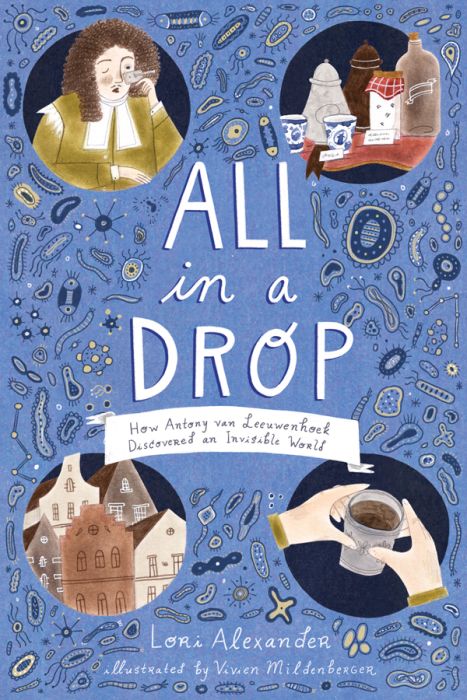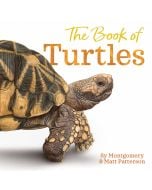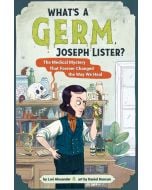
All in a Drop: How Antony van Leeuwenhoek Discovered an Invisible World
By Lori Alexander
Illustrators
Illustrated by Vivien Mildenberger
Edition
Robert L. Sibert Award Honoree - 2020
2020 Green Earth Book Award for Children's and Young Adult Nonfiction
By Lori Alexander
Hardcover edition
Publisher Houghton Mifflin Harcourt Imprint Houghton Mifflin Harcourt ISBN9781328884206
Awards and Honors NSTA Best STEM Books - 2020Robert L. Sibert Award Honoree - 2020
2020 Green Earth Book Award for Children's and Young Adult Nonfiction
All in a Drop: How Antony van Leeuwenhoek Discovered an Invisible World
 9
9
Out of stock
SKU
9781328884206J
Microbes are everywhere: in the soil and oceans, in snow, and inside our bodies. But
in Antony van Leeuwenhoek’s time, people believed that what they saw with their
own eyes was all that existed in the world. How did a simple tradesman—who didn’t
go to college or speak English or Latin like all the other scientists—change everyone’s
minds?
Proving that remarkable discoveries can come from the most unexpected people and
places, this eye-opening chapter book, illustrated with lively full-color art, celebrates
the power of curiosity, ingenuity, and persistence.
Author’s note. Time line of events. Glossary. Source notes. Selected bibliography. Index. Full-color illustrations were created using pastel, colored pencil, and watercolor.
in Antony van Leeuwenhoek’s time, people believed that what they saw with their
own eyes was all that existed in the world. How did a simple tradesman—who didn’t
go to college or speak English or Latin like all the other scientists—change everyone’s
minds?
Proving that remarkable discoveries can come from the most unexpected people and
places, this eye-opening chapter book, illustrated with lively full-color art, celebrates
the power of curiosity, ingenuity, and persistence.
Author’s note. Time line of events. Glossary. Source notes. Selected bibliography. Index. Full-color illustrations were created using pastel, colored pencil, and watercolor.
|
Standard MARC Records Cover Art |
Science Nonfiction Elementary Plus (Grades 2-6)
Science Nonfiction Elementary Plus
Science Nonfiction Elementary Plus (Grades 2-6)
For Grades 2-6
Explore everything from the galaxies to your own backyard in these accurate and up-to-date nonfiction titles. Young scientists will experience fascination monthly with the 14 books in this category.
14 books per Year
$0.00 per Year
Interests
Biographies, Graphic Novels, Nonfiction, Reluctant Readers, Science/STEAM





